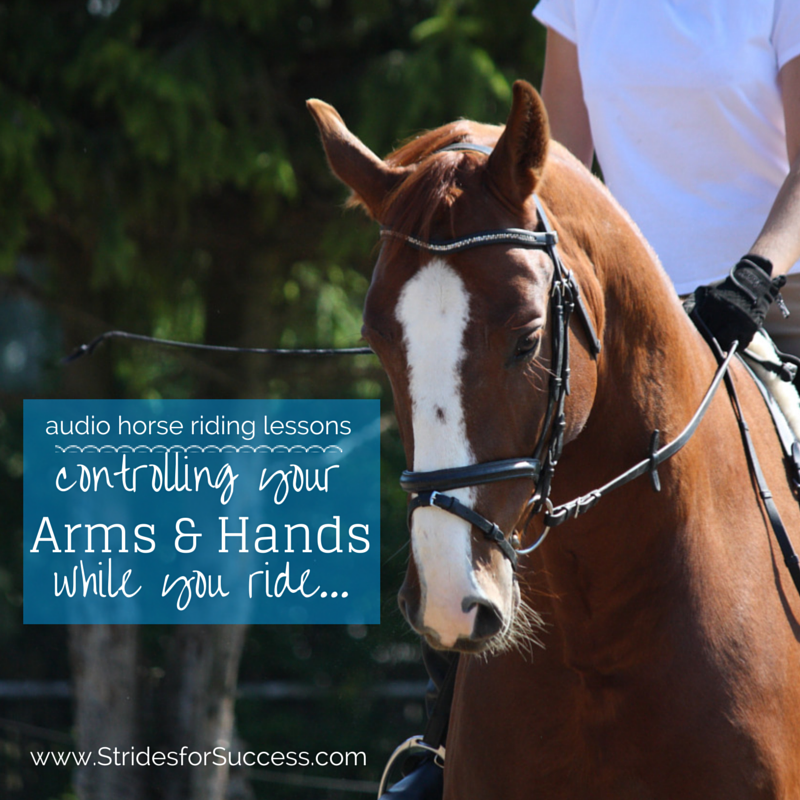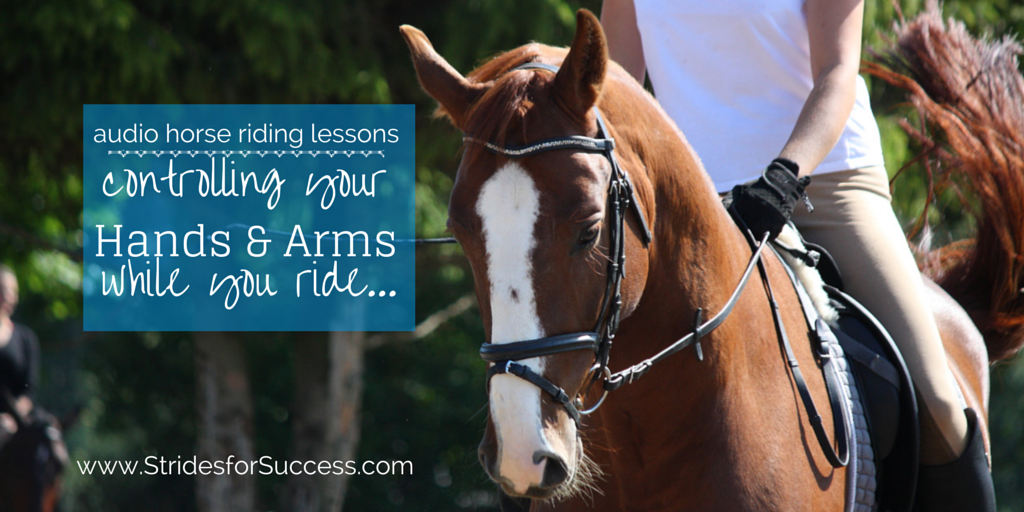Do you find that often when you ride, your hands begin to do their own thing? Waving about, flagging some imaginary air traffic, conducting a symphony, or just bouncing up and down like a jack hammer?! To make this even more frustrating; it seems like the more you try to ‘quiet’ or ‘still’ your hands the worse the problem becomes…
The uncomfortable truth is that while you might be feeling frustrated about your lack of control, it is often your horse that is taking the brunt of this particular riding challenge. He may begin to fight you for the reins, lean on you or pull you along.
Or maybe you spend time while riding continuously changing or fiddling with the length of your reins, dropping your hands and straightening your elbows, twisting your wrists so your knuckles are on top. Or perhaps you are flapping your shoulders and arms in an attempt to ‘relax’ and all the while, that soft, following contact with your horse’s mouth continuously evades you…

Steady hands come from a relaxed body that is carrying itself. Relaxed does not mean floppy or loose, but rather supporting yourself without any signs of tension. Relaxation will also allow your body to follow your horses movement, which is the first key to controlling your arms and hands. I realize that it seems almost counter intuitive to focus on your body first when trying to ‘fix’ your hands, however one will not happen without first controlling the other.
When your body is relaxed, your ‘shock absorbers’ can work optimally, working with the energy from the horse and not against it. Often hands that bounce around are the result of a rigid or tense rider, who is only rigid and tense because they are trying so desperately to control their body! It is a vicious cycle.
The first thing to do is begin paying attention to your seat and pelvis and how, in walk, they follow your horse. Notice your breathing, and lift your upper body to allow your lungs to fill with air with each breath, to remove any tension from your body. Open your chest, remembering all the while to carry your body, not slouch, and then allow your arms to simply fall from your shoulders.
Then remember to carry your hands. Don’t just allow gravity and your horses mouth to dicate where your hands are at any given time. In order to become soft through your contact, you must carry your own hands, which means bending your elbows. A good guide line is to try keep your hands around the height of your belly button.
Once you have your hands where they should be, pay attention to how your shoulders, upper arms, elbows, fore arms, wrists and fingers all work together to follow your horses mouth. If you move your hand forward, move it from the elbow. Supple elbows will allow you to absorb movement and continue to keep a soft contact.
Pay attention that your fingers are closed on the reins. Also, that you are ‘holding’ the rein with your thumb by pinching the rein between your thumb and index finger, not by squeezing your fingers. This will then free up your fingers to have more subtle ‘conversations’ down the reins to your horses mouth. Holding the reins this way will also prevent your reins becoming long and causing you to drop the contact with your horse.

Begin establishing a following contact by lengthening your reins out, so you initially will have very little connection with your horses mouth. Move your elbows and hands with your pelvis and seat. Think of them being somehow invisibly connected to each other and relaxed enough that the movement of your horse underneath you is enough to quietly influence your body. Don’t force the movement, you must follow your horse, not drive your horse along by pushing with your seat or hands. When you feel that you are now following your horses mouth, you can begin to slowly gather up your reins again and begin establishing a contact with your horses mouth. If you feel any tension coming back, gently lengthen your reins and begin again.
Another good visualization you can use is to think about carrying cups of hot tea… If your arms are tense, the tea will splash and spill from the cup. If your arms are floppy, the same thing will happen. Only when your arms are ‘working’ with your moving body, will the tea stay in the cup!
Remember that you do need to have a contact when riding. However that contact must come from soft, following hands that provide steady, consistent support connection and direction when needed. Sometimes it seems that more emphasis is placed on the leg and getting our horses back end working underneath him while being ridden. And this is true…
However, there must also be a contact to direct and contain that energy and ask your horse to work in a frame. Be careful not to hang on your horses mouth, but also not to lose the contact either. It is a fine balance, which needs to be continuously re-evaluated and adjusted depending on the work or the results of other aids.
A strong core must be maintained throughout, so you are carrying yourself and are agile enough to follow your horse. When you can begin to confidently carry both your body and your arms, you will find that the tension which was causing the jarring or bouncing will soon dissipate, leaving you with quiet, soft hands from which you can begin direct that wonderful energy.
Happy Riding
Lorna

